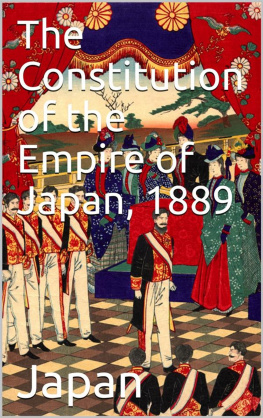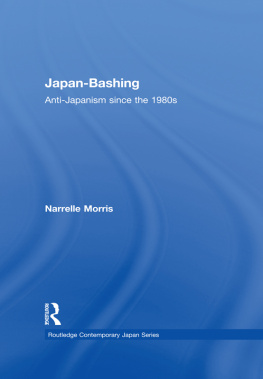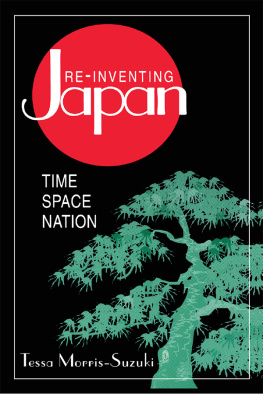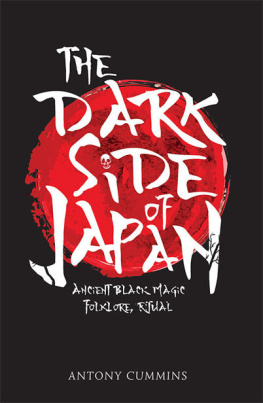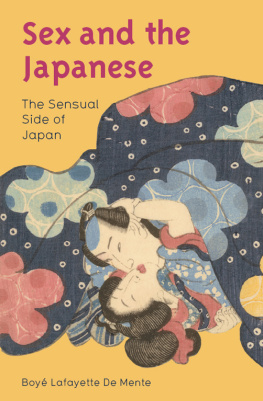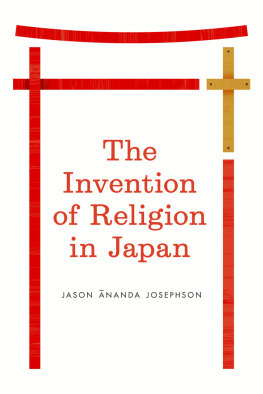Clans and Religion in Ancient Japan
Clans and Religion in Ancient Japan presents the latest research on the origin of Japanese religion and the clans in charge of religious services in ancient Japan. This book is written from a new analytical perspective, and it utilizes not only well-known historical manuscripts but also mythology, archaeological antiquities, pictorial materials, and genealogies.
The book aims to differentiate between the religious systems of Japan and those of other Asian countries, as well as between eastern and western cultures. Although different and unique, the book aims to show how Japan plays a part in the global environment and captures attention by answering questions from a historical perspective such as What is Japan? and How should Japan relate to the world?
Masanobu Suzuki is Senior Analyst for Textbooks at the Elementary and Secondary Education Bureau at the Ministry of Education, Culture, Sports, Science and Technology, Japan. He was formerly Associate Professor at Waseda University, Japan and has taught ancient Japanese history in many universities since 2008. He received his Ph.D. in Literature at Waseda University in 2012.
RoutledgeWIAS Interdisciplinary Studies
Edited by Hideaki Miyajima and Shinko Taniguchi
Waseda University, Japan
1 Corporate Crime in China
History and contemporary debates
Zhenjie Zhou
2 Why Policy Representation Matters
The consequences of ideological proximity between citizens and their governments
Willy Jou, Luigi Curini and Vincenzo Memoli
3 Electoral Survey Methodology
Insight from Japan on using computer assisted personal interviews
Edited by Masaru Kohno and Yoshitaka Nishizawa
4 Corpus Methodologies Explained
An empirical approach to translation studies
Edited by Meng Ji, Lidun Hareide, Defeng Li and Michael Oakes
5 Clans and Religion in Ancient Japan
The mythology of Mt. Miwa
Masanobu Suzuki
First published 2016
by Routledge
2 Park Square, Milton Park, Abingdon, Oxon OX14 4RN
and by Routledge
711 Third Avenue, New York, NY 10017
Routledge is an imprint of the Taylor & Francis Group, an informa business
2016 Masanobu Suzuki
The right of Masanobu Suzuki to be identified as author of this work has been asserted by him in accordance with sections 77 and 78 of the Copyright, Designs and Patents Act 1988.
All rights reserved. No part of this book may be reprinted or reproduced or utilised in any form or by any electronic, mechanical, or other means, now known or hereafter invented, including photocopying and recording, or in any information storage or retrieval system, without permission in writing from the publishers.
Trademark notice: Product or corporate names may be trademarks or registered trademarks, and are used only for identification and explanation without intent to infringe.
British Library Cataloguing in Publication Data
A catalogue record for this book is available from the British Library
Library of Congress Cataloging-in-Publication Data
Names: Suzuki, Masanobu, 1977 author.
Title: Clans and religion in ancient Japan : the mythology of
Mt. Miwa / Masanobu Suzuki.
Description: First [edition]. | New York : Routledge, 2016. |
Series: Routledge-WIAS interdisciplinary studies ; 5 | Includes
bibliographical references and index.
Identifiers: LCCN 2015046994 | ISBN 9781138922877
(hardback) | ISBN 9781315617909 (ebook)
Subjects: LCSH: ClansJapanHistoryTo 1500. | Miwa
Mountain (Japan)Religious life and customs. | Omiwa Jinja
(Sakurai-shi, Japan)HistoryTo 1500.
Classification: LCC DS855.3 .S883 2016 | DDC 299.5/6dc23
LC record available at http://lccn.loc.gov/2015046994
ISBN: 978-1-138-92287-7 (hbk)
ISBN: 978-1-315-61790-9 (ebk)
Typeset in Galliard
by Apex CoVantage, LLC
Mt. Miwa () is in present-day Nara Prefecture (), western Japan. Since ancient times, locals have believed that a god resides in the mountain and they worship the mountain devoutly. The miwa-jinja Shrine () at the foot of the mountain lacks a Honden (), or main hall. Therefore, people worship the mountain from the Haiden (), or worship hall. They worship the mountain as though it were a god. This is the oldest form of religious ceremony in Japan. Therefore, the miwa-jinja Shrine has great historical significance.
The ancient miwa clan (), one of the most powerful, served the Yamato Kingdom () and oversaw this religious service in ancient times. After the eighth century, they became Shint priests () at the miwa-jinja Shrine, and their lineage continues today. Therefore, knowledge of how the imperial family and the miwa clan conducted religious services at Mt. Miwa is indispensable for understanding the nature of politics in the Yamato Kingdom. Furthermore, it is essential for understanding the formation of the Japanese nation in the ancient past.
Previous research has described two periods of religious service at Mt. Miwa. From the fourth century to the fifth century, the imperial family worshipped the sun god. After the mid-sixth century, the miwa clan worshipped the god of curses. Between these periods, religious services were discontinued. To verify this earlier theory, I comprehensively investigated the myths and legends recorded in ancient history books, archaeological ruins and relics discovered around Mt. Miwa, and pictorial and genealogical materials handed down to the miwa-jinja Shrine.
Consequently, I determined that the god in Mt. Miwa is attributed many characteristics. Furthermore, the religious service conducted by the miwa clan was held without interruption from the end of the fifth century to the late sixth century. In ancient times, it was quite common for the imperial family to order local powerful clans to worship locally enshrined gods. This method of worship was systematized after the late seventh century. It eventually formed the foundation of the religious service system of the ancient Japanese nation after the eighth century.
In this book, I explain this theme, clans, and religion in ancient Japan in more detail.
The ideas presented in each chapter originally appeared in the following book and article. In writing this book, I extensively rearranged and reconstituted their contents and then translated them into English.
- Masanobu Suzuki, Study of miwa Clan (miwa-uji no Kenky) , Yzankaku, Tky, Japan, 2014.
- Masanobu Suzuki, Methodology for Analyzing the Genealogy of Ancient Japanese Clans, WIAS Research Bulletin no. 7 , 2015.
I am deeply grateful to Professor Tokio Shinkawa and Professor Akio Kawajiri at Waseda University for providing me with abundant advice and instruction from my school days until today. I give special thanks to Professor Hideaki Miyajima, Professor Tadashi Ebisawa, and Professor Shinko Taniguchi at Waseda University for giving me the opportunity to write a research book in English. I also owe a heavy debt to the Waseda Institute for Advanced Study (WIAS) at Waseda University for offering me such a fulfilling research environment.
This work was supported by JSPS KAKENHI Grant Number 15K16834.
Shint is the unique and traditional Japanese religion. In recent years, interest in and enthusiasm for Shint shrines among Japanese people and foreign tourists has increased. For example, the Ise-jingu Grand Shrines lavish ceremony for the reconstruction of its main building was broadcast on a large scale in Japan, as well as internationally. The Izumo-taisha Shrine, the Fushimiinari-jinja Shrine, the Kumano-taisha Shrine, and other famous shrines are extremely popular tourist destinations. In fact, many people have visited such shrines while traveling in Japan.





